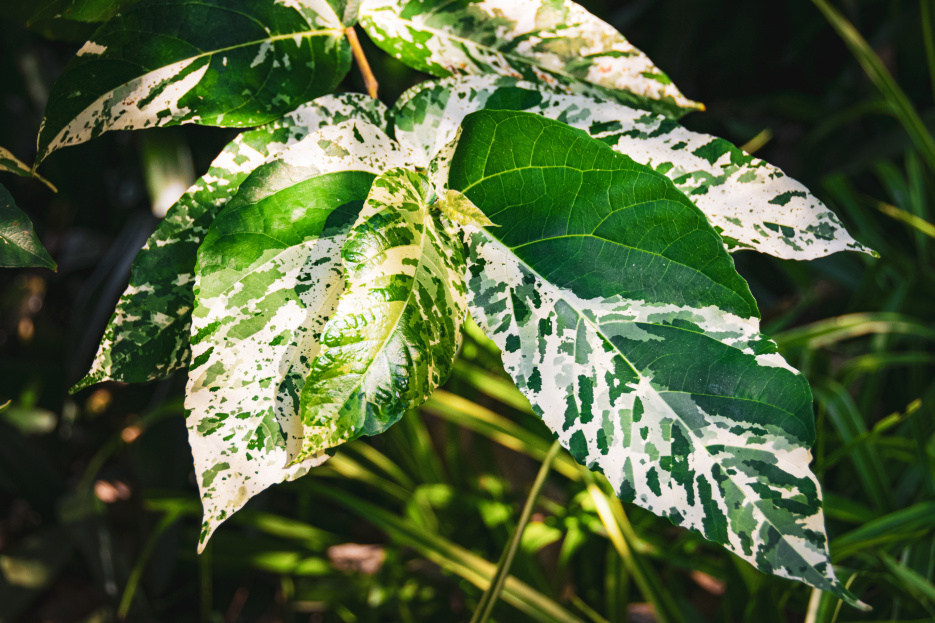
If you’re a fan of unusual foliage and dramatic textures, Ficus aspera—commonly called the Clown Fig—might just be your next favorite plant. Native to islands in the South Pacific, this rare and striking member of the fig family boasts large, leathery leaves splashed with creamy-white variegation that almost look hand-painted.
The name “aspera” comes from the Latin word for rough, referring to the leaf texture. It’s often grown for its exotic look and architectural form, making it a great statement plant for bright interiors, conservatories, or sheltered patios in warmer climates.
Ficus aspera thrives in bright, indirect light. To maintain its dramatic variegation, be sure to provide it with plenty of filtered sunlight—think of a spot near an east- or west-facing window.
It can handle some direct morning or late afternoon sun, but harsh midday rays may scorch the leaves. In lower light, you may see a reduction in growth and variegation.
Water when the top 1–2 inches of soil are dry. Like many figs, Ficus aspera prefers to dry out slightly between waterings. It's important to avoid overwatering, as this can lead to root rot.
During spring and summer (during its active growing season), water your plant more frequently. In fall and winter, reduce watering as the plant slows down.
Ficus aspera appreciates moderate to high humidity, similar to its tropical origins. If your indoor air is dry—especially during winter—consider using a humidifier, placing a pebble tray beneath the pot, or misting the leaves occasionally.
Keep temperatures between 65–85°F (18–29°C). Avoid cold drafts, air conditioners, or sudden temperature drops, as figs are sensitive to environmental changes.
Plant your Clown Fig in a well-draining potting mix. A blend made for houseplants or indoor trees works well—something with peat or coco coir, perlite, and pine bark to balance moisture and airflow.
Make sure your pot has good drainage holes, and repot every 2–3 years or when your plant becomes root-bound.
Feed Ficus aspera every 4–6 weeks during spring and summer with a balanced, water-soluble fertilizer at half strength. This will encourage healthy growth and vibrant variegation.
Skip fertilizing during fall and winter, when the plant’s growth slows naturally.
Ficus aspera is relatively low-maintenance, but you can prune it to shape or control its size. Prune in spring by cutting just above a node or leaf. Remove any dead or damaged leaves as needed.
The milky sap of ficus plants can be irritating to skin and toxic if ingested, so wear gloves when pruning and wash hands afterward.
You can propagate Ficus aspera through stem cuttings, though patience is key. Take a healthy cutting in spring or summer, let it callous over for a day, then root it in moist soil or water. Provide warmth and humidity for the best success.
Like other members of the ficus family, Ficus aspera is toxic to pets and humans if ingested. It contains latex-like sap that can cause skin irritation, stomach upset, or oral discomfort, so keep it out of reach of curious pets and children.